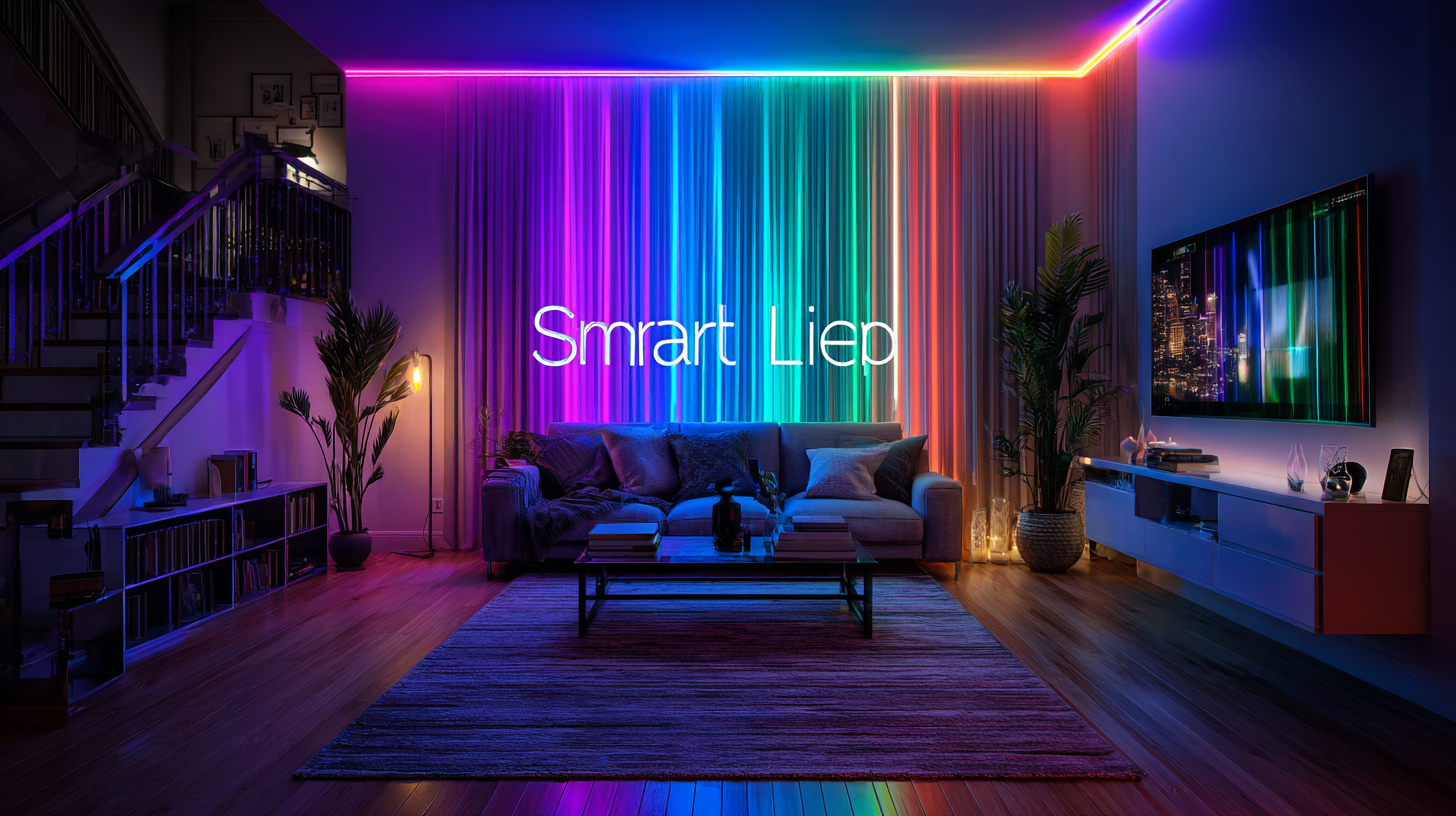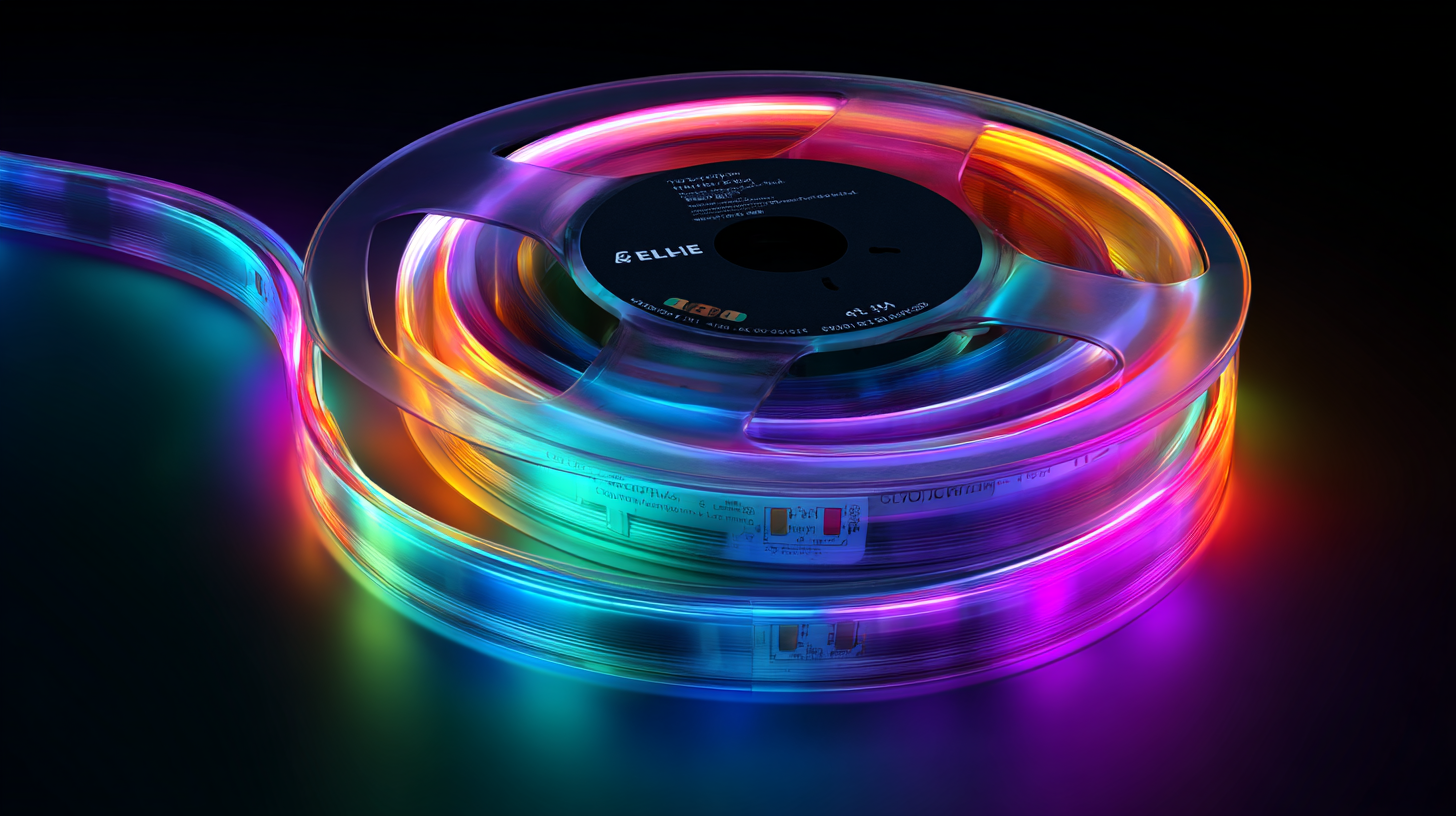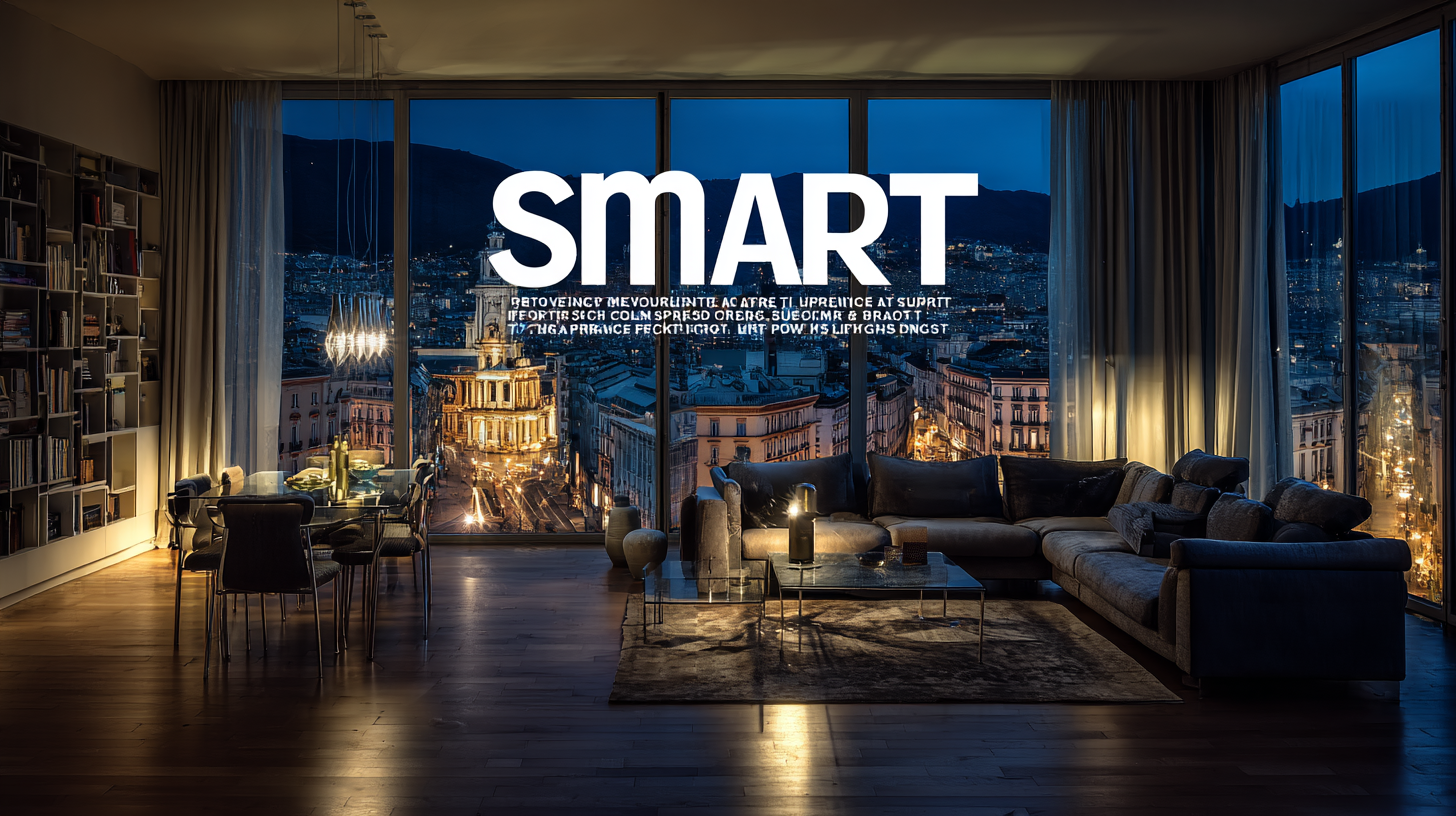Transforming Spaces: Innovative Applications of the Best Smart LED Lightstrip and Overcoming Common Challenges
In 2025, the landscape of interior design and lighting solutions is poised for a significant transformation, primarily driven by the rapid advancements in Smart LED Lightstrips. According to a recent market report by ResearchAndMarkets, the global LED lighting market is projected to reach $105.9 billion by 2025, with smart lighting solutions capturing an escalating share due to their versatility and energy efficiency.

Smart LED Lightstrips, which allow for customizable colors and brightness levels, are a key innovation enabling users to enhance their living spaces while also addressing common challenges such as energy consumption and aesthetic limitations. With the increasing integration of smart technology in everyday life, these products are not just revolutionizing how we illuminate our environments but are also fostering a more sustainable approach to energy use.
This blog will explore innovative applications of Smart LED Lightstrips and strategies to overcome the prevalent challenges in their implementation.
Innovative Uses of Smart LED Lightstrips in Modern Interior Design
 In modern interior design, smart LED lightstrips have emerged as a versatile tool that can dramatically transform spaces. These innovative lighting solutions provide not only practical illumination but also the ability to create moods and enhance aesthetics. Designers are using smart LED lightstrips to highlight architectural features, delineate spaces, and even complement furniture pieces. For instance, placing them along floor edges or under cabinets can add a warm, inviting glow while creating the illusion of more space.
In modern interior design, smart LED lightstrips have emerged as a versatile tool that can dramatically transform spaces. These innovative lighting solutions provide not only practical illumination but also the ability to create moods and enhance aesthetics. Designers are using smart LED lightstrips to highlight architectural features, delineate spaces, and even complement furniture pieces. For instance, placing them along floor edges or under cabinets can add a warm, inviting glow while creating the illusion of more space.
Moreover, the adaptability of smart LED lightstrips allows homeowners to experiment with colors and effects, giving them the freedom to refresh their interiors without major renovations. By incorporating features like smart controls and sync options with music or media, these lightstrips can elevate gatherings and personal moments alike. The ability to adjust brightness and color temperature also caters to various activities, from relaxing evenings to lively parties, making them an essential element in contemporary homes. Embracing smart LED lightstrips not only enhances functionality but also infuses creativity into interior design, resulting in spaces that are uniquely personal and inviting.
Key Features of the Best Smart LED Lightstrips for Enhanced Functionality
In the realm of modern home decor, smart LED lightstrips have emerged as a versatile solution for enhancing both aesthetic appeal and functionality. The best smart LED lightstrips offer a variety of key features that cater to diverse user needs. Notably, color customization allows for an impressive array of hues, enabling users to tailor their lighting to match their mood or event. Additionally, advanced control options, including voice activation and mobile app integration, provide seamless operation, making it easier than ever to set the perfect ambiance from anywhere in the home.
Another crucial feature of high-quality smart LED lightstrips is their energy efficiency. Many models utilize cutting-edge technology that not only reduces electricity consumption but also extends the lifespan of the lights. Moreover, various light modes, such as dimming and scheduling, allow users to create dynamic lighting experiences that adapt throughout the day. With these innovative functionalities, smart LED lightstrips are not just a mere decoration but a practical tool for enhancing living spaces, driving the trend of smart home automation further into the spotlight.

Overcoming Installation Challenges: Tips for Using LED Lightstrips Effectively
When it comes to installing LED lightstrips, many users encounter common challenges that can hinder their creative projects. One major issue is securing the lightstrip to various surfaces, which may require specific methods depending on the material. For instance, while adhesive backing works well on smooth surfaces like glass or metal, textured walls or ceilings may need additional support. Using mounting clips or double-sided tape can provide a more secure installation and mitigate the risk of the lightstrips peeling off over time.
Another common challenge involves power management and connectivity. Users often find themselves facing difficulties when trying to extend their LED setups or organize the cables neatly. To tackle this, it's essential to plan the layout of your lightstrips before installation. Measuring the required lengths and utilizing connectors wisely can help maintain a cleaner appearance. Additionally, incorporating smart controllers can enhance user experience by allowing for easier adjustments and automation, resulting in a seamless integration of the lightstrips into your home decor. By addressing these installation challenges with the right strategies, you can unlock the full potential of LED lightstrips in transforming your spaces.
Transforming Spaces: Innovative Applications of the Best Smart LED Lightstrip and Overcoming Common Challenges
| Application Area | Common Challenges | Tips for Overcoming Challenges |
|---|---|---|
| Interior Decoration | Difficulty in adhering to various surfaces | Use adhesive clips for added support |
| Outdoor Lighting | Weather exposure affecting longevity | Choose weather-resistant light strips |
| Mood Lighting | Complexity in configuring settings | Utilize mobile apps for easier control |
| Accent Lighting | Inconsistent brightness | Ensure proper power supply and spacing |
| DIY Projects | Limited experience with electrical setups | Follow online tutorials and safety guidelines |
Integrating Smart Lighting with Home Automation Systems for Seamless Control
With the global smart lighting market projected to reach $16.17 billion in 2023 and expected to grow at a compound annual growth rate (CAGR) of 16.52% from 2024 to 2031, the integration of smart lighting systems into home automation has never been more vital. Homeowners are increasingly seeking seamless solutions that allow for efficient control of their living spaces, improving both convenience and energy efficiency. The integration of smart LED lightstrips into these systems is revolutionizing how we illuminate our homes, enhancing ambiance while optimizing energy consumption.
When integrating smart lighting, consider using a centralized app compatible with various smart devices. This tip can drastically simplify the user experience, allowing for quick adjustments and automation through schedules or routines. Another key point is to ensure compatibility between your smart light features and existing home automation systems. This will provide a more cohesive and streamlined experience.
As we look toward the future, the European smart home market, valued at approximately $26 billion in 2023 and projected to surpass $263.6 billion by 2032, highlights the growing demand for innovations in smart home technologies. By overcoming common challenges such as compatibility and system complexity, homeowners can fully enjoy the benefits of integrated smart lighting solutions.
Future Trends in Smart Lighting: What to Expect by 2025 and Beyond
As we look towards 2025 and beyond, the future of smart lighting technology promises to bring significant transformation to our living spaces. The global smart home market is expected to grow from $1007.1 billion in 2024 to $2889 billion by 2031, driven by a strong consumer preference for home automation. This surge indicates a growing interest in creating more intuitive and connected environments that enhance our daily lives.
One of the key trends shaping smart lighting is the emphasis on human-centric design. Technologies such as voice control and IoT device integration will allow for seamless interactions between users and their home lighting systems. With the advancement of AI, we will see smarter lighting solutions that adapt to our routines, providing comfort while optimizing energy consumption.
**Tips: To maximize your smart lighting experience, consider investing in light strips that can be customized for different moods and activities. Additionally, explore integration with other smart home devices for a cohesive control system. Finally, keep an eye on emerging technologies that may offer even greater efficiencies and enhancements in the future.**
